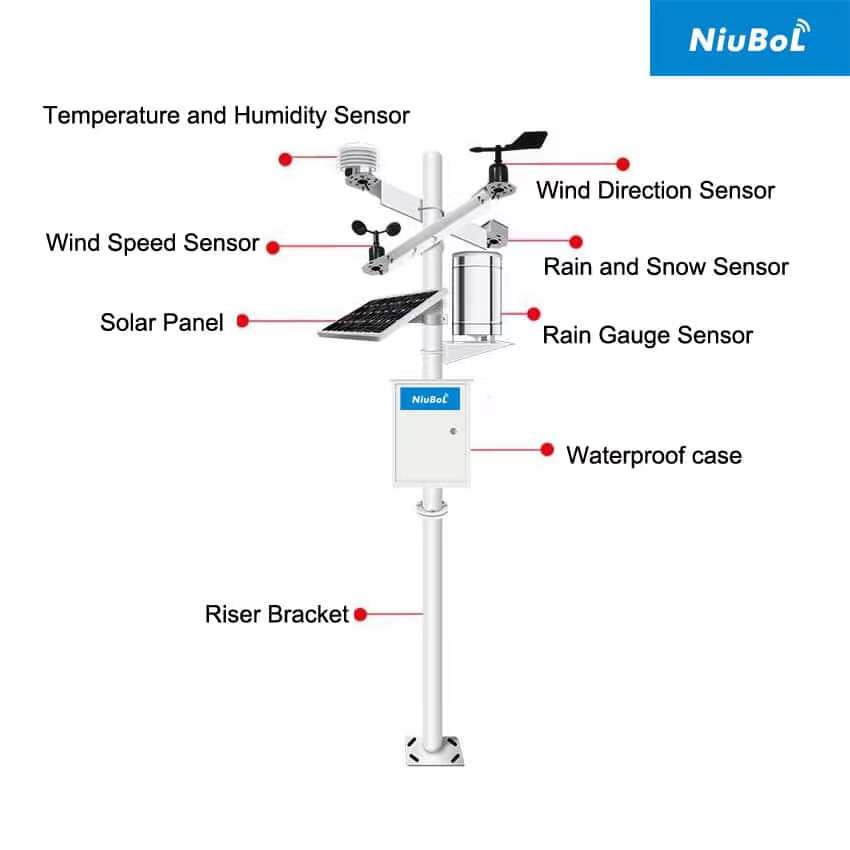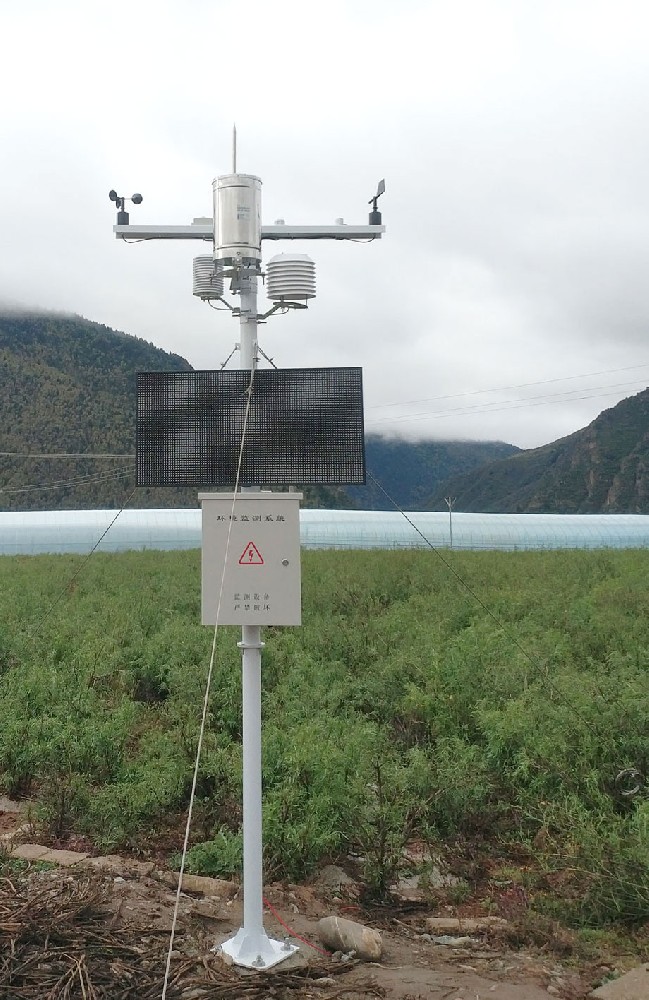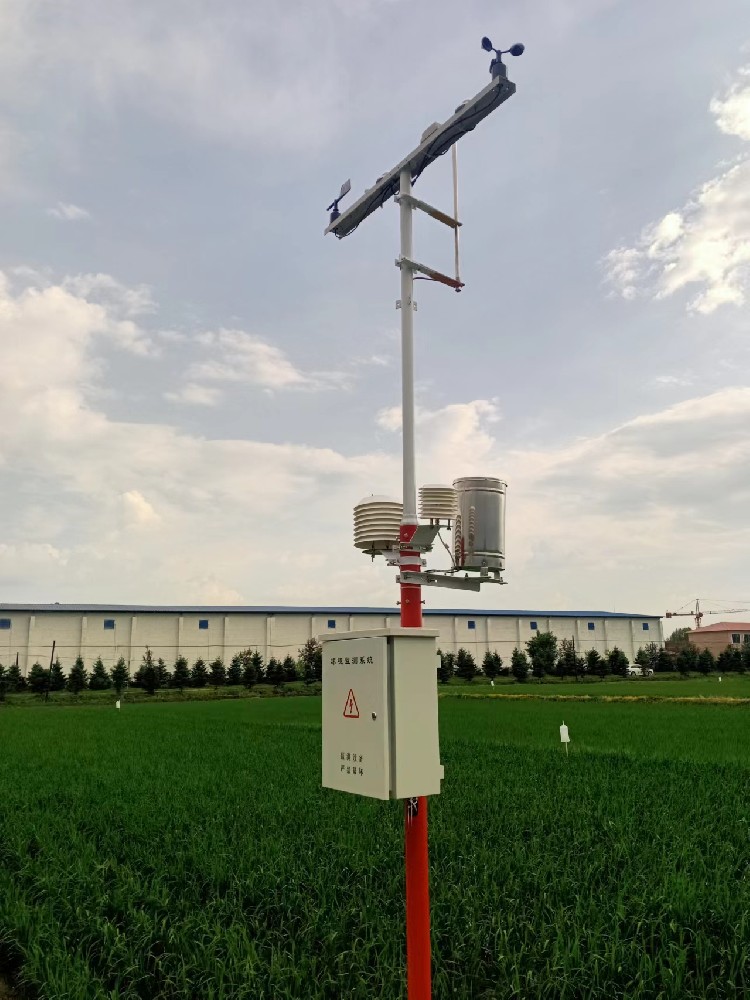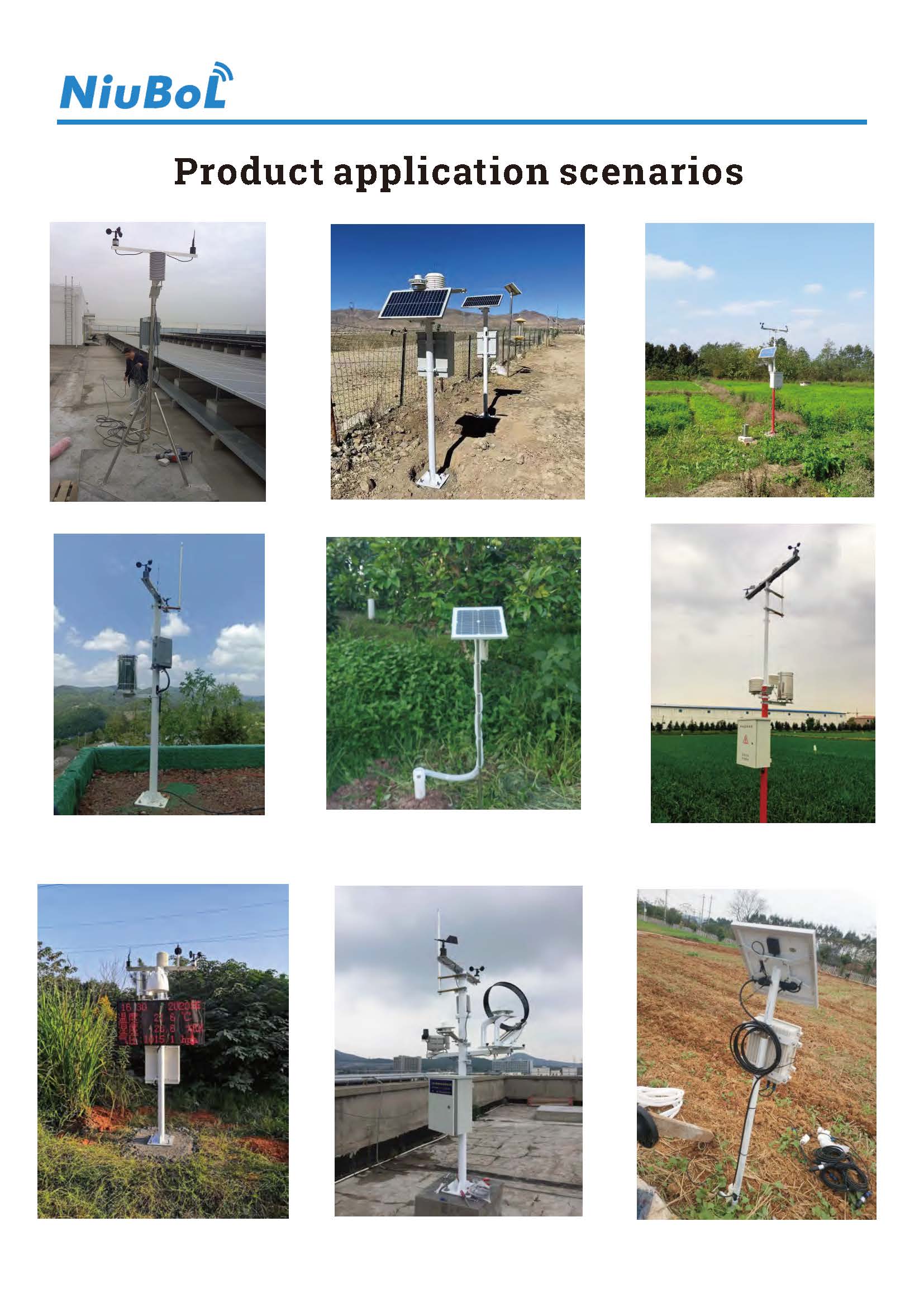

— Blogs —
—Products—
 Consumer hotline +8618073152920
Consumer hotline +8618073152920 WhatsApp:+8615367865107
Address:Room 102, District D, Houhu Industrial Park, Yuelu District, Changsha City, Hunan Province, China
Product knowledge
Time:2025-10-14 14:44:33 Popularity:465
In modern agriculture, the agrometeorological station (Agrometeorological Station, abbreviated as AMS) is hailed as the "data hub" of precision agriculture. Its core mission is not merely to record weather but to provide executable scientific guidance for farms through real-time monitoring of multi-dimensional data on meteorology, soil, and crop physiology.
Unlike ordinary meteorological stations (used for macro weather forecasting), agrometeorological stations are customized automated weather stations (AWS) tailored for agricultural application scenarios. They are optimized around "crop needs" and directly serve precision farming activities such as irrigation scheduling, pest and disease control, fertilization strategies, and yield prediction.

A complete agrometeorological station consists of multiple high-precision sensors that work synergistically to build a "digital twin environment" for the farm.
Monitors temperature, humidity, wind speed and direction, rainfall, total solar radiation, and photosynthetically active radiation (PAR).
These data are used to calculate evapotranspiration (ET) and photosynthetic efficiency, helping farms assess crop light, water needs, and stress resistance.
A key module unique to agrometeorological stations.
It reflects root zone environment and fertility status through data on soil temperature, moisture, water potential, and electrical conductivity (EC).
For example, when soil moisture falls below a set threshold, the system can automatically trigger irrigation commands for precise water replenishment.
Through devices such as leaf wetness, leaf temperature, and stem micro-variation sensors, it captures the crop's "physiological signals."
When leaf wetness exceeds the threshold for a sustained period, the system identifies potential risks of frost or fungal diseases, enabling ultra-early pest and disease warnings.
The central data logger performs time synchronization, filtering, and cleaning on data from different sensors, then uploads it in real-time to the cloud platform via 4G, LoRaWAN, or satellite links.
Integrated with AI models, it forms a closed-loop management system of automatic analysis + intelligent alerts + execution control.

The core value of an agrometeorological station lies not in "collection" but in converting data into intelligent decisions. Here are three key functions:
By calculating crop net water requirement (Net Irrigation Requirement) through soil moisture and evapotranspiration (ET), the system automatically determines irrigation timing and volume, achieving "on-demand water supply" with water savings of over 30%.
Combining leaf wetness, air temperature and humidity, and climate models, the system predicts disease risks in advance.
For example, the grape downy mildew model can provide warnings up to 72 hours early, allowing farmers to complete biological control before outbreaks.
Using temperature data to calculate Growing Degree Days (GDD), the system precisely predicts key crop stages such as flowering and maturity, helping farms plan harvesting and market timing.

NiuBoL's agrometeorological station solutions integrate industrial-grade meteorological sensors, high-precision soil probes, and smart IoT communication technology, seamlessly integrating into irrigation control systems and agricultural management platforms.
Our systems comply with WMO and ISO standards, support LoRaWAN/RS485/Modbus communications, and provide customizable agronomic algorithm models that convert complex climate data into straightforward farming recommendations, helping farmers achieve digital decision-making.
A: It should be selected at a location that represents the regional microclimate, avoiding interference from buildings, trees, and water bodies. Temperature and humidity sensors are generally installed at 1.5–2 meters height, while soil sensors are placed in the crop root zone.
A: No.
[NiuBoL] equipment features a low-maintenance design, requiring only daily cleaning of the rain gauge and solar panels. The data logger has remote diagnostic capabilities, allowing most issues to be troubleshooted via the cloud.
A: Absolutely.
We provide open APIs and standard protocols (such as Modbus) for direct integration with smart valves, pumps, and fertilizer applicators, achieving closed-loop control from "data monitoring" to "automatic execution."

An agrometeorological station is not just a sensor system but the core engine of agricultural digitalization. It allows farms to rely no longer on experience and weather luck but on real-time data, model decisions, and automatic control to boost yields and resource efficiency. In the future, every modern farm will have its own agrometeorological station. This is not just a trend but a competitive edge. NiuBoL Meteorological Stations – Making Agriculture Smarter, Higher-Yielding, and More Sustainable with Data. Contact us now to build your smart farm and usher in a new era of data-driven precision agriculture.
Prev:Ambient Temperature Sensors Explained
Next:Anemometer Wind Speed vs. Wind Direction: What’s the Difference?
Related recommendations
Sensors & Weather Stations Catalog
Agriculture Sensors and Weather Stations Catalog-NiuBoL.pdf
Weather Stations Catalog-NiuBoL.pdf
Related products
 Combined air temperature and relative humidity sensor
Combined air temperature and relative humidity sensor Soil Moisture Temperature sensor for irrigation
Soil Moisture Temperature sensor for irrigation Soil pH sensor RS485 soil Testing instrument soil ph meter for agriculture
Soil pH sensor RS485 soil Testing instrument soil ph meter for agriculture Wind Speed sensor Output Modbus/RS485/Analog/0-5V/4-20mA
Wind Speed sensor Output Modbus/RS485/Analog/0-5V/4-20mA Tipping bucket rain gauge for weather monitoring auto rainfall sensor RS485/Outdoor/stainless steel
Tipping bucket rain gauge for weather monitoring auto rainfall sensor RS485/Outdoor/stainless steel Pyranometer Solar Radiation Sensor 4-20mA/RS485
Pyranometer Solar Radiation Sensor 4-20mA/RS485
Screenshot, WhatsApp to identify the QR code
WhatsApp number:+8615367865107
(Click on WhatsApp to copy and add friends)
